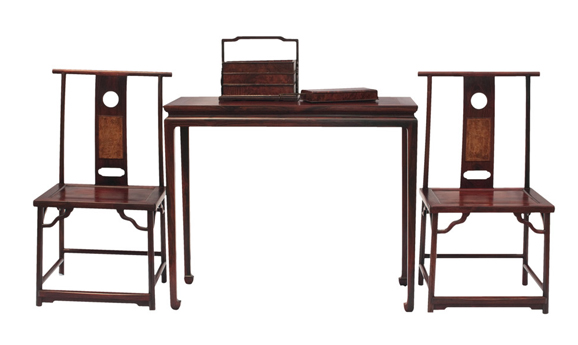
Furniture, like people, gives people the first impression of shape. It is the essence of a person, an object. Mr. Wang Shizhen once summed up the sixteen items of Ming-style furniture, giving people the feeling that they were like the "Beauty Figure" that appeared in the Republic of China.
In fact, shape is a matter of opinion. It feels very imaginary, but it is very objective. It is the shape we see. When it comes to the shape of Ming style furniture, you can't help but mention the literati design. Most of the Ming style furniture does not make or do less carved decoration, more elegant and less kitsch, this is the concrete manifestation of the literati tendency of Ming-style huanghuali furniture, and it is also a potential reason that collectors and researchers have been very popular in recent years.
It can be said that China's feudal society is centered on literati, and the literati's cultural cultivation is very high, so Ming style furniture shows its quality in the early stage of design. Many of today's things are designed by artisans or technicians, lacking artistic elements. This is related to the pure liberal arts education that Chinese literati have received in the long feudal society. The advantage of the liberal arts is that the educated people surpass others in culture and cultivation, so many aesthetics in the shape of the furniture are very subtle. . For Ming style furniture, I think that the appreciation level of most people today is lower than that of the designers at that time. The designers at that time were at the high end of social culture, and our appreciators today are often in the middle of society. The middle level here refers to the level of appreciation, not property. Aesthetics has nothing to do with property. A very poor person may have a strong aesthetic, and a person who can afford a lot of expensive Ming furniture may not appreciate its beauty. So I said that aesthetics has nothing to do with property, but about culture. I have collected many years of Ming furniture, and I rarely find the same. This is also because of the strong literati tendencies of Ming style furniture, which fully demonstrates individuality. Every literate person expects to attract others' attention and respect with personality, and does not want everyone's aesthetic and interest to be similar.
Of course, Ming-style furniture is not all good. Although many furniture are well-made, the shape is not necessarily beautiful. Mr. Wang Shizhen once summed up the eight diseases of Ming-style furniture. I think that the best things in Ming style furniture can only account for 10% or even lower. When the best and ordinary Ming furniture appear in the market at the same time, its price difference is not big. Our current collectors are more concerned with materials, like red sandalwood and huanghuali, which are clearly defined in the material. There are not many people working on the shape. But I think that shape is the soul of furniture, or that the quality of furniture is shape, not the other.
The Ming style furniture pays attention to the shape for a reason. The Ming Dynasty rooms are relatively large, the depth is deeper, and the indoor light is darker. It is not without paying attention to details. In this case, it is meaningless to pay attention to the details, because it cannot be seen. After the middle of the Qing Dynasty, the glass appeared. After the lighting was finished, the furniture began to pay attention to the details. Therefore, there were many furniture carvings in the Qing Dynasty, and the Ming-style furniture carvings were less and more attention to shape.
The Ming style home has many typical shapes. The most representative one is the circle chair. It is a very important shape in the Ming style furniture. It appeared in the Song Dynasty and was perfect when it was made in the Ming Dynasty. It connects the handrails with the brain down to form a strangely imaginative shape with attractive charm. In the Ming Dynasty, the front legs of the circle chair and the goose neck were generally made of wood, which objectively ensured the stability and firmness of the chair. The inner side of the outer circumference of the leg not only satisfies the sleek appearance, but also ensures the convenience of construction and reasonable structure. The advantage of this design is the use of ergonomics. When our chair is sitting, the arm is suspended and the arm is lowered. It is the same as the big arm and the arm can be fully rested. This is an outstanding feature of the ring chair over other chairs. At the same time, this seemingly simple Ming style furniture contains extremely rich content. It expresses a kind of literati who pays attention to the inner world's quiet and unassuming emotions. This kind of emotion runs through the design of Ming style furniture. It seems that its structure and external form are very classic today, which is very rare. A design can have four, five, or ten years of vitality today. For example, today's models are constantly changing, and each style has withdrawn from the historical stage in three or five years, and Ming style furniture has Three or four hundred years are not outdated, and the classics designed by the literati at that time can be seen.
Fulike Houseware&Gifts Co.,Ltd. , https://www.cnfulike.com